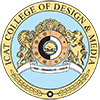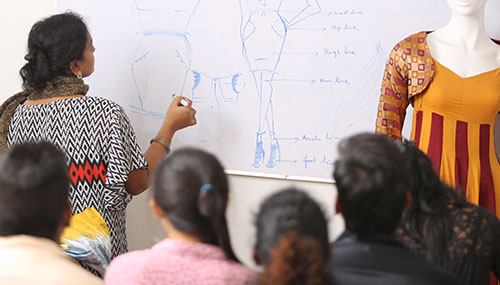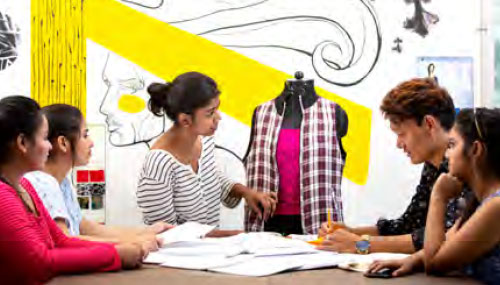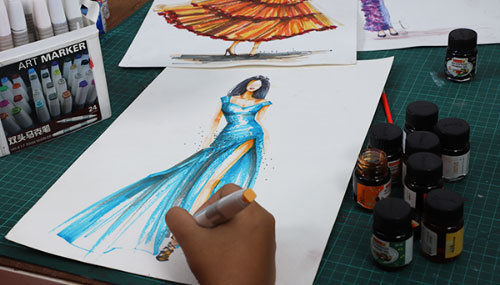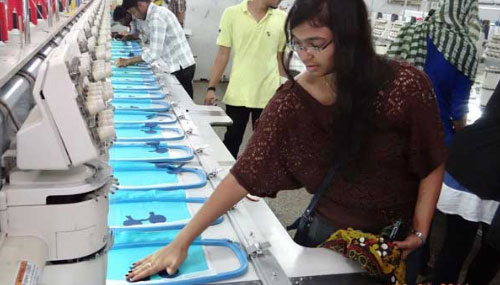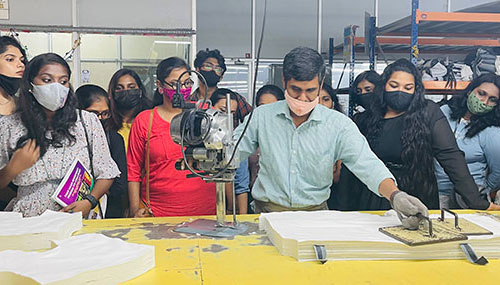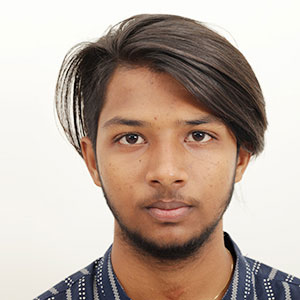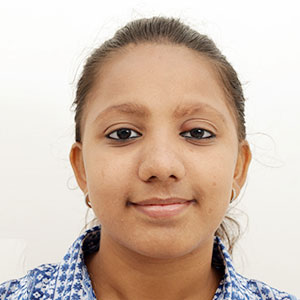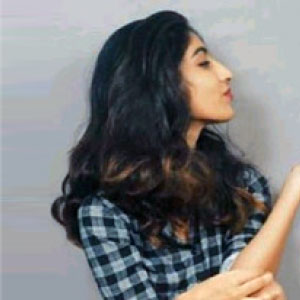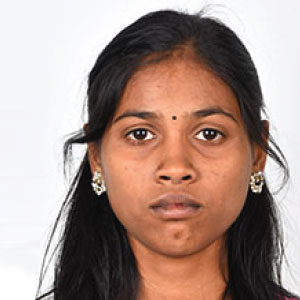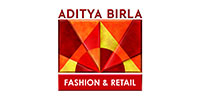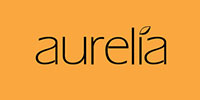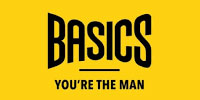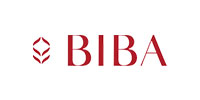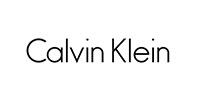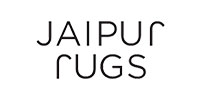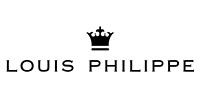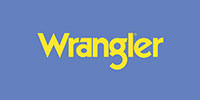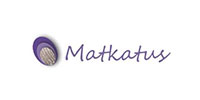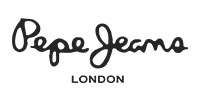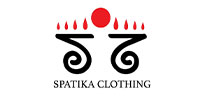- 3 YearsCourse Duration
- ChennaiCampus
- +2 (or) equivalentEligibility
- Alagappan UniversityAwarded by
Course Overview
Join the Trend-Setting Design Program
The Programme makes the students as a visionary Fashion Designer who will be able enough to foresee the fashion trend and drive a social transformation. The students get thorough knowledge on fabrics, textile manufacturing, fashion art and design, pattern making, computer aided design, fashion forecasting, draping, fashion merchandising, marketing, visual merchandising, clothing psychology and so on. They get hands-on experience on various textile techniques and surface ornamentation techniques like dyeing, marbling, screen printing, weaving, block printing and so on. They also get intense practice on fashion illustration, pattern making, sewing techniques, textile testing, creating fashion graphics using industry-standard software, designing fashion accessories and on different needle crafts. By introducing students to all facets of fashion designing, the module prepares them to take up varied roles from a Fashion Stylist and Apparel Designer to an Entrepreneur.
This 3-year specialist skill building at ICAT is conducted through various proven modes of learning, including classroom training, guided practice sessions, industry visits, seminars/workshops from professionals, showcase of work to industry professionals to seek feedback and individual/collaborative projects that give par real-time experience. To confidently step into the world of Fashion, the module insists students to create a portfolio of their works that showcase their specialist knowledge and skills gained through the module. The students are also given an opportunity to present their fashion collection in an annual fashion show attended by eminent personalities in the industry
 |
Why Study Fashion Design at ICAT?
Understanding the needs of the fast-paced world, the Fashion Design Programme at ICAT prepares young passionate minds for a promising career in the industry in just 3 years. The Programme is a perfect blend of theoretical knowledge and practical understanding. The wide spread knowledge and skills imparted, and the opportunities provided to experience every important facet of fashion creation and promotion makes the students an all-round professional eligible to take up varied careers in the fashion industry.
The Programme provides:
- 100% Placement opportunities *
- Industry-standard tools to explore fresh ideas.
- Early insight to the industry through many interactions with professionals.
- First-hand experience on how the industry functions through industry / factory visits.
- Ideas to become a successful Entrepreneur (Boutique / Design Studio).
- Opportunity to showcase creative work at various public events and national-level competitions.
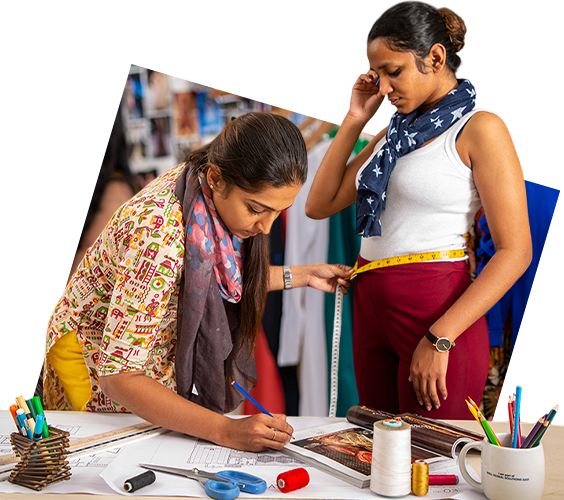 |
Curriculum
Module Highlights
YEAR - 1
SEMESTER I
- Tamil / Hindi / French I
- Communicative English - I
- Introduction to Textiles
- Fashion Art & Design - Practical
- Basic Pattern Making and Sewing - Practical
- Basic Computer - Practical
- Value Education
SEMESTER II
- Tamil / Hindi / French II
- Communicative English - II
- Textile Manufacturing
- Fashion Illustration - Practical
- Designer CAD - Practical
- Pattern Making & Garment Construction - Practical
- Textile Designing - Practical
- Environmental Studies
YEAR - 2
SEMESTER III
- Tamil / Other Languages - II
- English - III
- History of Indian Costumes
- Garment Manufacturing Technology
- Fashion Apparel Design - Practical
- Pattern Making & Construction for kid's and women's wear - Practical
- Fashion Sketching & Accessory Design - Practical
- Industrial Internship
- Entrepreneurship
- Non Major Elective - I
SEMESTER IV
- Tamil /Other Languages - IV
- English - IV
- Historic Costumes
- Textile Chemical Processing
- Fashion research & Surface Ornamentation - Practical
- Pattern Making & Construction for men's wear - Practical
- Textile Chemical Processing - Practical
- Non Major Elective - II
YEAR - 3
SEMESTER V
- Apparel Costing Technique
- Theatre Costumes
- Draping for Fashion Design - Practical
- Pattern CAD - Practical
-
Discipline Specific Elective - I
- Creative Pattern Drafting & Construction - Practical
- Pattern Making & Construction for Evening wear - Practical
-
Discipline Specific Elective - II
- Fashion Retail Management
- Human Resource Management
- Boutique Management
-
Discipline Specific Elective - III
- Industrial Internship
- Craft Project
- Career development/employability skills
SEMESTER VI
- Fashion Merchandising and Marketing
- Fashion & Clothing Psychology
- Industrial Pattern Making & Construction - Practical
- Designer Portfolio - Project
- Designer Collection - Project
-
Discipline Specific Elective - IV
- Textile Testing & Quality Control
- Visual Merchandising
Dear Student,Get Admission / Fees Details
* Required Fields
Teaching Methodology
Learning Beyond the Walls
Skills to Build
Skills that Make You a Fashion Professional
Student Awards
Rise and Shine
-

ICAT Students 2nd Prizes
The students of Fashion dept. winning - 2nd prize in Fashion show conducted by IFIM Business College, Bangalore - IFIM 2019
-
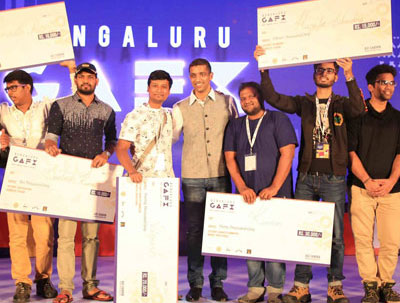
ICAT Student Won First Prize
GAFX CONFERENCE
-
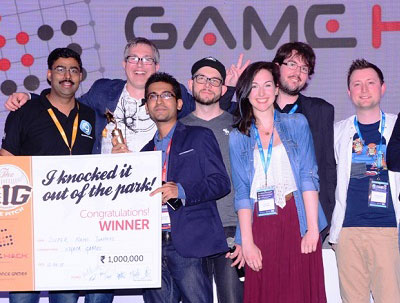
ICAT Alumni Wins a Million
ICAT Alumni won a Million at Pocket Gamer Connects - GAME HACK 2015
-
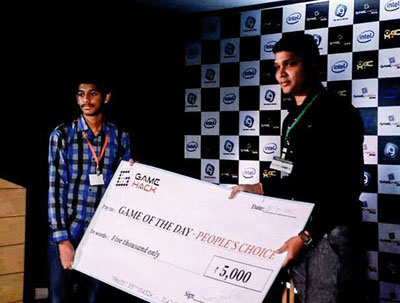
ICAT Student Won 2nd prize
Mr. Sudhan, Second prize winner for his game 'Black Hole', a gravity based game - GAME HACK
Student Testimonial
Our Students Say
Career Opportunities
Get Placed as a...
ICAT’s exclusive Placement Cell holds an esteemed relationship with leading fashion brands and ensures the placement of its students in suitable positions to take up a career role of:
Top Placements
Meet Our Shining Stars
Top Recruiters
We Collaborate with 500+ Leading companies

Application Process
Become an ICATian
Step 1 : Fill the application form
Apply by Filling Application form.
Step 2 : Interview Process
Go through a direct communication with the Admission Team
Step 3 : Join ICAT
An offer letter will be send. Secure your seat by paying the admission fee.
International Professionals
Learn from the Professionals’ Perspective
The curriculum and teaching strategies at ICAT is never an instant thought. They are all an outcome of research and brainstorming of ideas from renowned professionals in the field. The knowledge brigade that guides us through the curriculum delivery of Bachelor's Degree Fashion Design includes:
| Name | Designation |
|---|---|
| Mr. G Venket Raman | Celebrity Fashion Photographer |
| Mr. Vivek Karunakaran | Fashion Designer, VIIA |
| Mrs. Prajanya Anand | Fashion Choreographer, Studio Prajanyaa |
| Mr. Sipi Sakkaravarthi | Textile Designer, Screen printing, Dying |
| Ms. Laksha Chordia | Fashion Designer, L&M |
| Mr. Kevin | Photography Lecturer, ICAT Design & Media College |
| Mr. Mehul Dangi | Fashion Designer, Shyaway.com |
| Ms. Aruna | Professional Knitwear Designer |
| Ms. Usha Nandhini | Fashion Designer, Ambattur Clothing Pvt. Ltd. |
| Ms. Lekha Rajeev | Fashion Consultant, Career Adviser. |
| Mr. Ben Philip | Fashion Illustrator |
| Mr. Mukund | Kaveri Clothing |
| Mrs. Rehana Basheer | Fashion Designer |
| Mrs. Swathi Purshothamman (Studio 149) | Fashion Designer |
| Mr. Ravi Singhee (Magnum Clothing) | Fashion Designer |
| Mrs. Anu Varthan | Fashion Designer |
| Mrs. Shanthi | Sun Network |
| Mrs. Chandini Khanna (Katha) | Fashion Designer |
| Mrs. Urmilla Agarwal | Fashion Designer |
| Mr. Hamza (The Belomoda) | Fashion Designer |
| Mrs. Sangeetha (Saroyce Ventures) | Fashion Designer |
| Mrs. Kaveri (Kaveri Clothing) | |
| Ms. Momitha (City on Styles) | |
| Mr. Manoj Karthik | Creative Head, Ganapathi Fabrics |
| Mr. Bhaskar | Dhanalakshmi Textiles |
| Mr. Karthisan | Merchandiser, Ganapathi Fabrics |
| Mr. Suresh Karthi | Head Merchandier, S.B. Apparels |
| Mr. Vikram | Creative Head, Green Textile Process |
Got Queries?
Contact Any of Our 3 State-of-the-Art Campuses
-
Chennai
153, Santhome High Road, Mylapore, Chennai - 600 004.
044 - 4293 4293, +91 - 95001 28555

-
Bangalore
424, Bommanahalli, Hosur Main Road, Bangalore - 560 068.
080 - 4110 7755, +91 - 96111 73607

-
Hyderabad
H.NO.3-1-30, S.Y.No:34/2 and 35, Bahadurguda, Saroornagar, L.B.Nagar, R.R.District, Hyderabad - 500 074
040 - 2447 7755, +91 - 75694 34552

